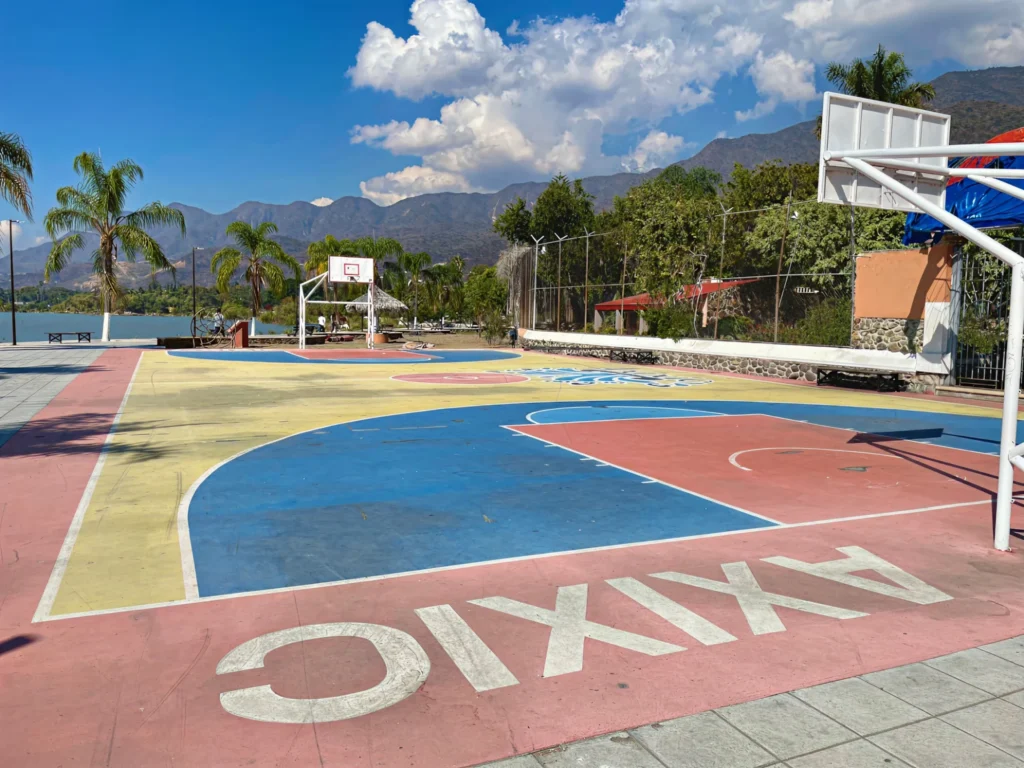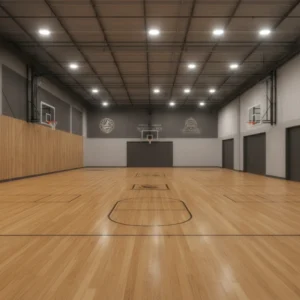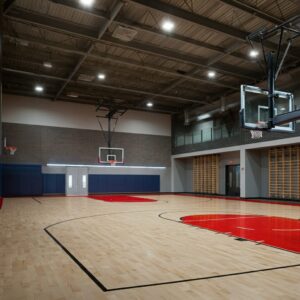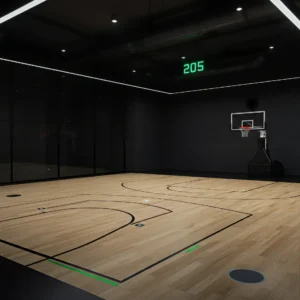Basketball is one of the most universally loved sports, and its courts are as diverse as the players themselves. From professional arenas to community parks, basketball courts come in all shapes and sizes. But does size really matter when it comes to choosing between indoor and outdoor basketball courts? Let’s explore how court dimensions, materials, and environments can impact the game, and discover why choosing the right specifications is crucial for facility managers aiming to create the best possible playing experience.
What Are the Standard Basketball Court Dimensions?
Before we dig into the details, let’s establish the standard dimensions for indoor and outdoor basketball courts. While they generally follow specific guidelines, there are slight variations based on the level of play and location.
- NBA/NCAA Indoor Court Dimensions
Length: 94 feet (28.65 meters)
Width: 50 feet (15.24 meters)
- High School Indoor Court Dimensions
Length: 84 feet (25.6 meters)
Width: 50 feet (15.24 meters)
- FIBA Indoor Court Dimensions
Length: 28 meters (~91.9 feet)
Width: 15 meters (~49.2 feet)
- Outdoor Basketball Court Dimensions
Outdoor courts typically mirror indoor dimensions but may vary depending on recreational or installation requirements.
Key Considerations for All Courts
- Buffer Zones: Ensuring a safe space around the court’s boundary to prevent injuries.
- Run-Off Areas: Extra space beyond the boundary line for safety and optimal gameplay.
- Safety Margins: Especially important for professional courts, where players move at high speeds.
Knowing the standard dimensions and considerations allows facility managers to build courts that comply with regulations and maximize player safety.
Indoor Basketball Courts
Indoor basketball courts are often the pinnacle for serious basketball players. Competitive games, professional leagues, and even amateur tournaments usually take place indoors.
Advantages of Indoor Basketball Courts
- Controlled Environment
Indoor courts eliminate weather disruptions like rain, snow, or wind, offering consistent gameplay conditions year-round.
- Durability of Hardwood Sport Flooring
Hardwood floors, such as maple, are the gold standard for basketball courts. They provide exceptional bounce, traction, and shock absorption to reduce injury risk. Hardwood sport flooring also ensures adherence to professional play standards.
- Optimal Dimensions for Different Levels of Play
Whether it’s FIBA, NBA, or high school basketball, indoor courts follow strict size guidelines that prepare players for competitive play.
- Innovative Flooring Options like CopoSports Biomass Flooring
CopoSports’ biomass court flooring offers an eco-friendly alternative to traditional hardwood. This innovative material provides high performance, superior shock absorption, and sustainable features that make it an ideal choice for modern sports facilities.
Disadvantages of Indoor Basketball Courts
- Higher Initial Investment
The costs for constructing and maintaining indoor basketball courts, especially with hardwood or biomass flooring, tend to be higher than for outdoor installations.
- Limited Accessibility
Indoor courts are often reserved for organized games, reducing their availability for casual players.
Outdoor Basketball Courts
Outdoor courts are synonymous with community spirit, attracting everyone from seasoned players to casual enthusiasts. Found in parks, schools, and residential areas, they represent the heart of recreational basketball.
Advantages of Outdoor Basketball Courts
- Cost-Effective
Outdoor courts can be constructed at a fraction of the cost compared to indoor facilities. Materials such as asphalt, concrete, or synthetic surfaces keep budgets manageable.
- Community Accessibility
Outdoor courts are open to the public, fostering community engagement and encouraging physical activity.
- Flexible Installation Sizes
Recreational outdoor courts don’t always follow standardized measurements, allowing customization based on available space and intended use.

Disadvantages of Outdoor Basketball Courts
- Impact of Surface Materials on Gameplay
Unlike hardwood or biomass floors, asphalt or concrete surfaces are less forgiving on joints and muscles, increasing the risk of injuries over time.
- Weather-Dependent Usage
Rain, extreme heat, or snow can affect gameplay and damage the court surface.
- Durability Concerns
Outdoor courts typically require more frequent repairs due to wear and tear caused by weather and constant exposure.
Factors Influencing Court Size and Design
When planning a basketball court, several factors come into play:
- Intended Use
Courts designed for professional leagues, schools, or public recreation will have differing requirements.
- Available Space
Limited space might necessitate modifications to standard dimensions, particularly for outdoor courts.
- Budget
Indoor facilities with advanced biomass or hardwood flooring will cost more than outdoor courts with asphalt or synthetic materials. Choose your design based on long-term value rather than upfront costs.
Why Biomass Macwood Court Flooring Stands Out
At the forefront of innovative sports surfaces, CopoSports’ Biomass Macwood Court Flooring combines performance with sustainability. Here’s why it’s an excellent choice for both indoor and outdoor basketball courts:
- Key Features
- Superior shock absorption, ideal for reducing player injuries.
- High performance, delivering great bounce comparable to hardwood floors.
- Sustainability
Biomass materials support eco-friendly practices while still exceeding performance expectations.
- Long-Term Value
With excellent durability, CopoSports flooring minimizes maintenance costs, making it an economical choice over time.
Adding CopoSports biomass flooring to your facility ensures a premium playing surface that meets competitive standards while being kind to the environment.
Build the Best Basketball Court for Your Facility
Both indoor and outdoor basketball courts have their unique advantages, but the decision ultimately comes down to intended use, budget, and available space. Carefully considering the court’s dimensions, materials, and environment will ensure you create a facility that provides the ultimate playing experience while maximizing its functionality.
Looking for expert guidance on designing your basketball court? Contact us today to explore how CopoSports biomass flooring and our tailored designs can elevate your sports facilities.









